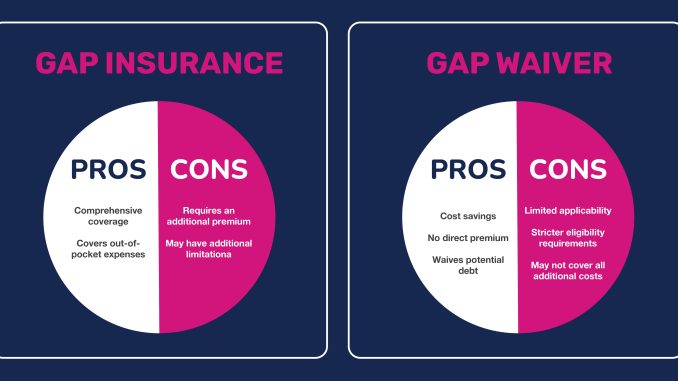
Insurance policy gaps can be deceptively costly. They often go unnoticed until a claim is denied or coverage falls short, leaving individuals or businesses exposed to financial risk. These gaps occur when there’s a mismatch between the coverage provided and the actual needs of the insured, and they can arise from a variety of factors—changes in circumstances, misunderstandings about policy terms, or simple oversight. Avoiding these gaps requires a proactive approach, one that combines regular review, clear communication, and a thorough understanding of how insurance policies work in practice.
One of the most common causes of insurance gaps is the failure to update coverage in response to life or business changes. For individuals, this might mean not adjusting a homeowner’s policy after renovating a property or neglecting to increase auto coverage after purchasing a more expensive vehicle. For businesses, it could involve expanding operations, hiring more staff, or acquiring new assets without revisiting existing policies. Insurance is not a static product—it’s designed to reflect risk, and when that risk changes, the coverage should evolve accordingly. A policy that was adequate a year ago may no longer offer sufficient protection today. That’s why regular check-ins with an insurance advisor are essential. These conversations help ensure that coverage keeps pace with reality and that no critical exposures are left unaddressed.
Misunderstanding policy language is another frequent source of gaps. Insurance documents are notoriously dense, filled with exclusions, conditions, and technical jargon that can obscure what’s actually covered. Many policyholders assume that their insurance will protect them in a wide range of scenarios, only to discover that certain events or losses fall outside the scope of their policy. For example, a business might believe its general liability insurance covers cyber incidents, when in fact those risks require a separate cyber liability policy. Similarly, a homeowner might assume flood damage is included in their standard coverage, not realizing that flood insurance is typically sold as a separate policy. These assumptions can be costly. To avoid them, it’s important to read policies carefully and ask questions. A good insurance broker or agent will take the time to explain coverage in plain language and clarify any ambiguities.
Timing also plays a critical role in avoiding gaps. Lapses in coverage can occur when policies are allowed to expire without renewal or when there’s a delay in switching providers. Even a short gap between the end of one policy and the start of another can leave the insured vulnerable. This is particularly relevant in business contexts, where continuous coverage is often required by contracts or regulations. For instance, a contractor may need to maintain liability insurance to comply with licensing requirements or client agreements. If that coverage lapses, even briefly, it could result in penalties or lost business. Setting up automatic renewals, calendar reminders, and working closely with an insurance advisor can help ensure that coverage remains uninterrupted.
Coordination between multiple policies is another area where gaps can emerge. Many individuals and businesses carry several types of insurance—property, liability, health, auto, and more. These policies often interact, and if they’re not properly aligned, coverage gaps can result. For example, a business might have separate policies for commercial property and business interruption, but if the terms don’t match, a claim related to a fire or natural disaster might not be fully covered. Similarly, individuals with umbrella policies need to ensure that their underlying auto or homeowners coverage meets the minimum requirements for the umbrella policy to apply. Coordination is key, and it requires a holistic view of all insurance holdings. Working with a single broker or advisor who understands the full picture can help avoid conflicting terms and ensure seamless protection.
Another important consideration is the adequacy of coverage limits. Even when a policy is in place, it may not provide enough financial protection to cover a significant loss. This is especially true in areas like liability insurance, where legal costs and settlements can quickly exceed standard limits. Underinsurance is a subtle but serious form of coverage gap. It doesn’t mean the policy is missing—it means it’s insufficient. To guard against this, policyholders should periodically assess their risk exposure and adjust limits accordingly. This might involve increasing coverage in response to rising asset values, inflation, or changes in legal liability trends. It’s not just about having insurance—it’s about having the right amount of it.
Finally, the human element plays a role. Insurance is a relationship-driven industry, and the quality of that relationship can influence how well coverage is tailored to individual needs. A knowledgeable and attentive advisor can help identify potential gaps, recommend appropriate solutions, and advocate on behalf of the client during claims. Conversely, a lack of engagement or poor communication can lead to misunderstandings and missed opportunities. Building a strong partnership with an insurance professional is one of the most effective ways to ensure comprehensive coverage. It’s about trust, transparency, and a shared commitment to managing risk effectively.
Avoiding insurance policy gaps is not a one-time task—it’s an ongoing process. It requires vigilance, curiosity, and a willingness to engage with the details. Whether you’re an individual protecting your home and family or a business safeguarding your operations, the goal is the same: to ensure that when something goes wrong, your insurance is there to make it right. By staying informed, asking questions, and reviewing coverage regularly, you can turn insurance from a passive safety net into an active tool for resilience. And in a world where uncertainty is the only constant, that kind of preparedness is invaluable.